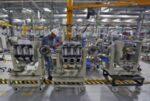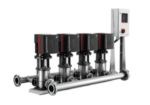BuildIT Construction can be fully integrated with 3D data
. Spokesperson: CHEW Beow Kwan, Product Marketing Associate Manager, Asia Pacific, FARO Technologies Please tell us what BuildIT Construction is all about? The BuildIT Construction software leverages on FARO’s cutting-edge 3D metrology capability. FARO is to first to offer this fully integrated building lifecycle Quality Assurance (QA) and Quality Control (QC) management tool empowering construction professionals to continuously evaluate projects with real time comparisons against CAD designs using 3D scan data. The software from FARO uniquely enables laser scanner users to perform immediate, real-time build and verify analysis throughout the entire project, and facilitates a new level of cost management and operational efficiency. BuildIT Construction can be fully integrated with 3D data collected from FARO Focus Laser Scanners, optimised for the FARO TracerM Laser Projector for placement and layout of structural components and is compatible with the FARO Laser Tracker for prefabricated modular positioning. It can also be used seamlessly with other third-party hardware. Where do you see this software being used most? Application areas that will benefit most from the BuildIT Construction software include Architecture, Civil Engineering/Surveying, Construction, Facility Management, Historical Preservation, and Mechanical, Electrical and Plumbing (MEP). AEC professionals will find the software useful for: Verifying accuracy of scan data to design models Detecting incorrect placement or missing features such as walls, columns, beams, pipes, etc. Performing important measurements accurately and quickly Inspecting construction for adherence to building standards Verifying shifts and movements within structural performance over time with 4D analysis Performing real time monitoring of adjacent structures throughout the project lifecycle Is there a lot of construction underway across ASEAN? Prospects for construction in the ASEAN region is generally bright. According to the Global Construction 2030 Report[1], the ASEAN construction market is expected to exceed US$1 trillion by 2030, with growth predominantly driven […]










